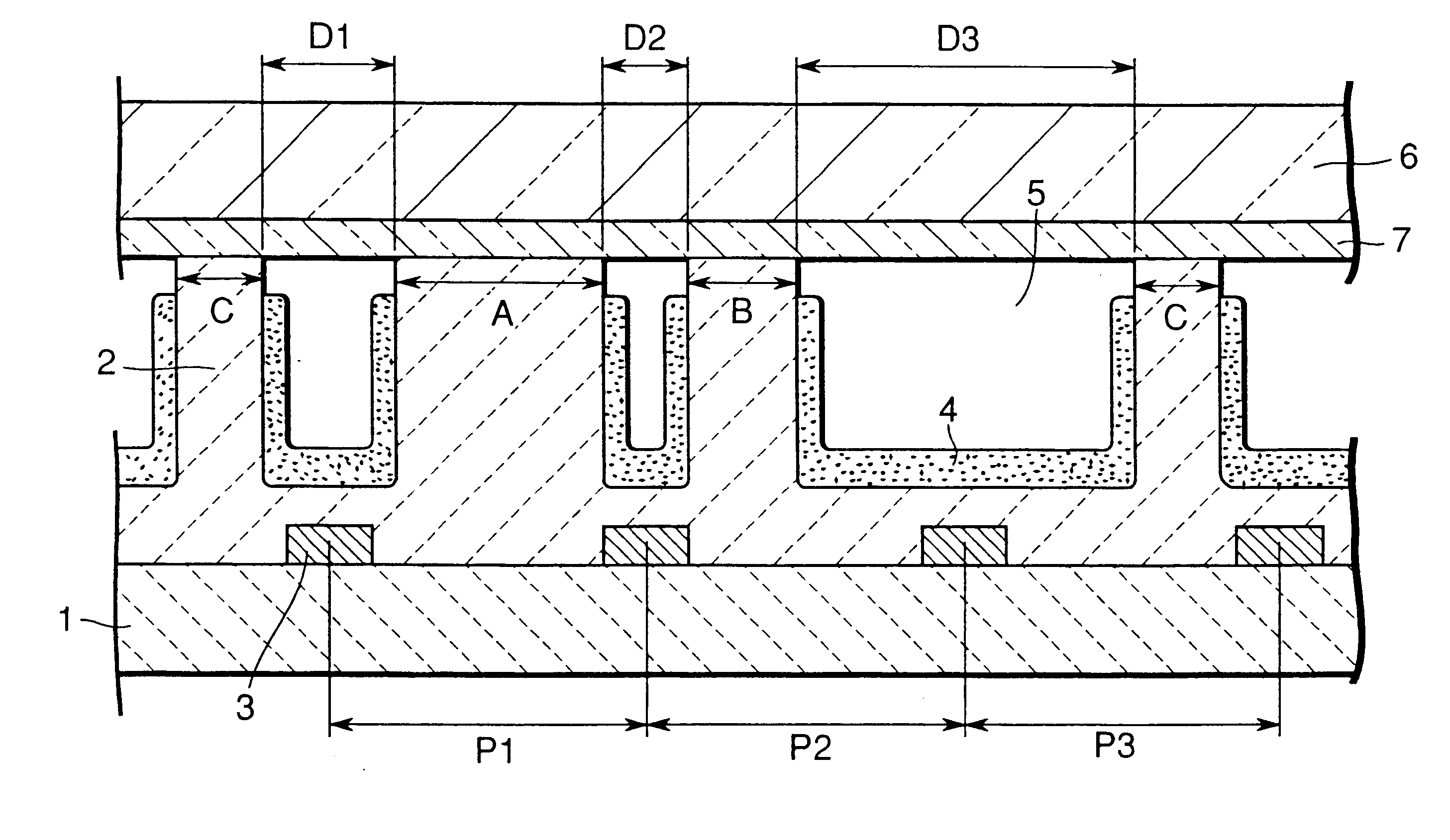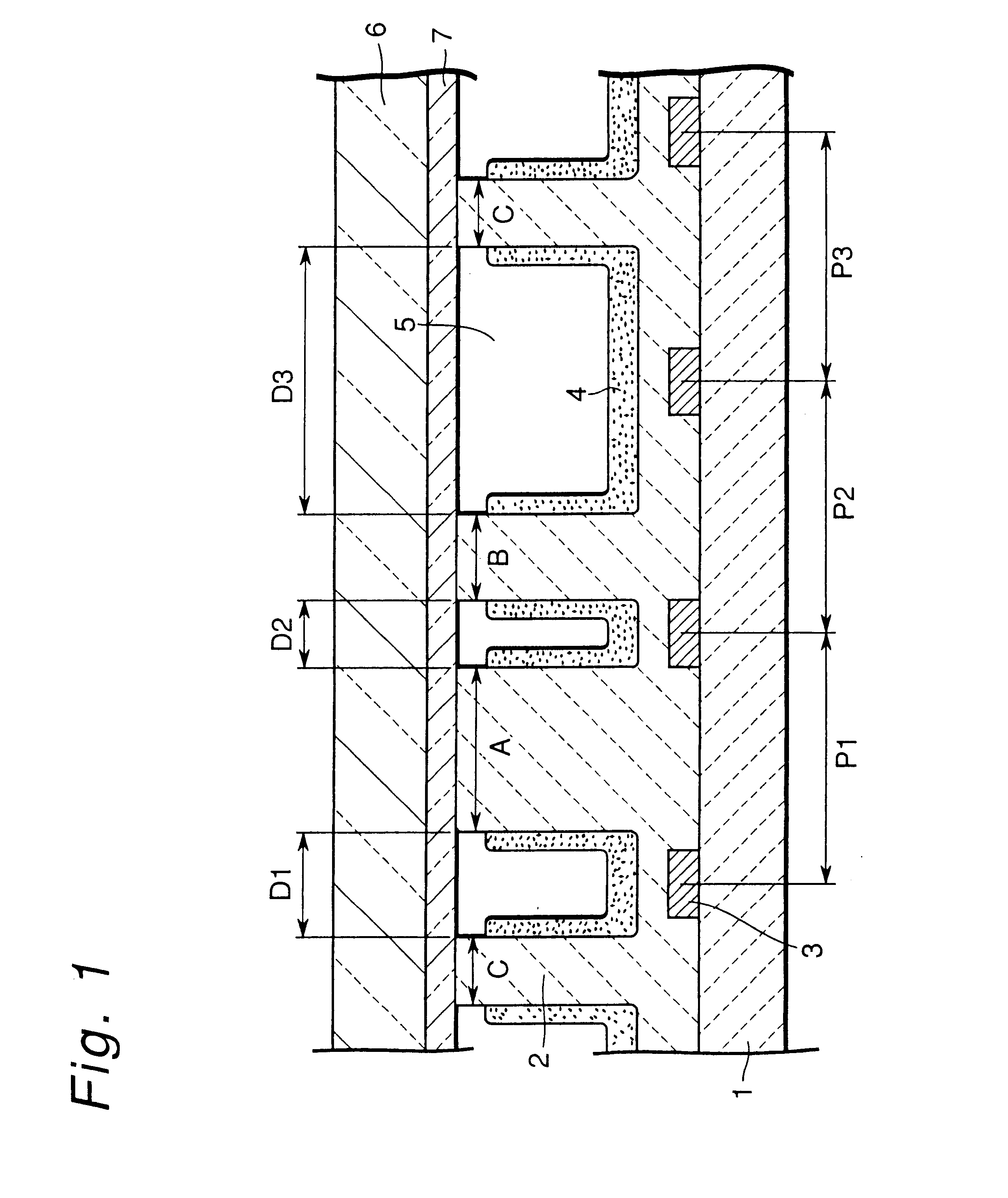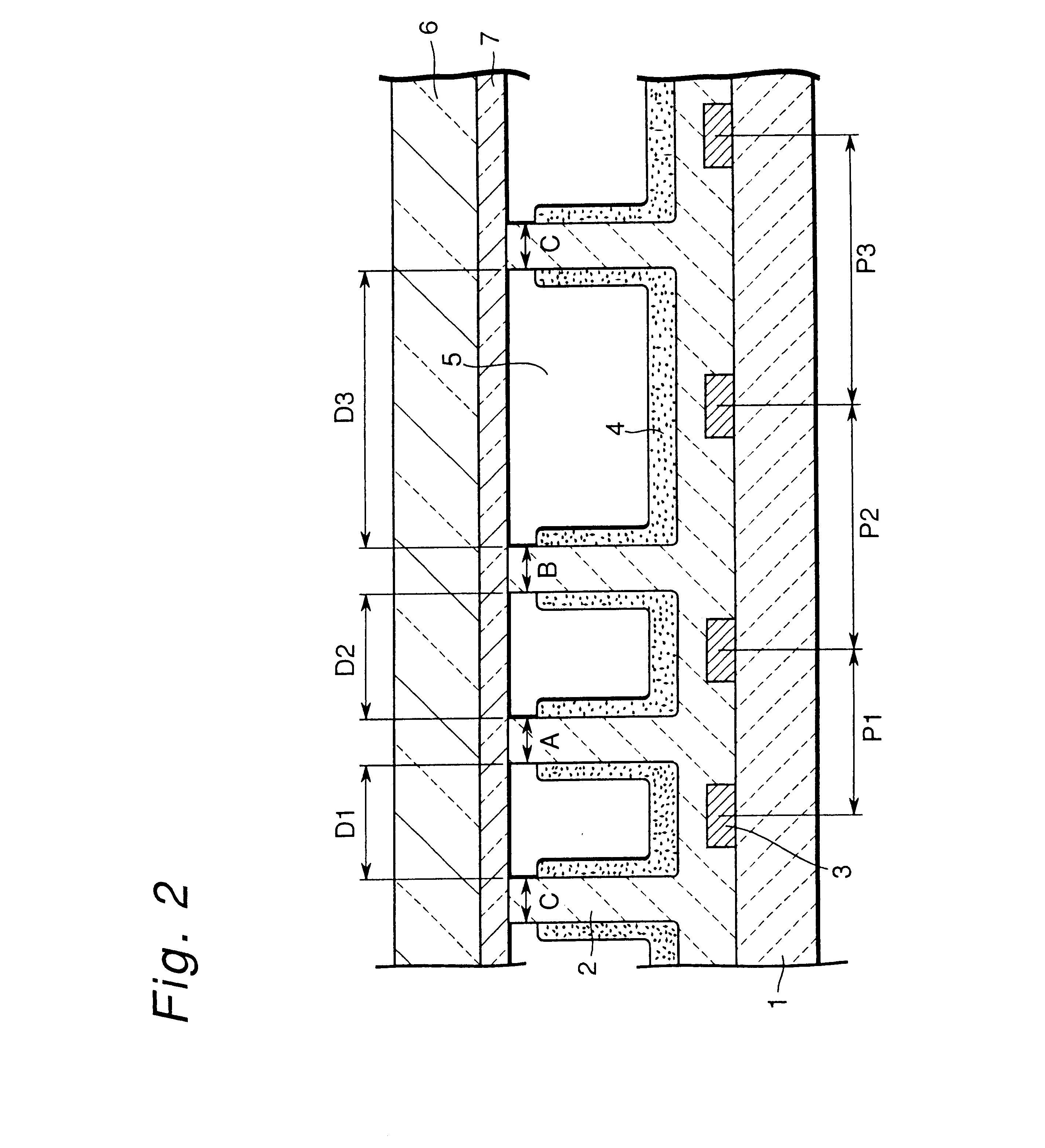Plasma display device
a display device and plasma technology, applied in the field of cathode ray tubes, can solve the problems of difficult representation, affecting the quality of plasma display, and the inability to control the gradation of display smoothly
- Summary
- Abstract
- Description
- Claims
- Application Information
AI Technical Summary
Benefits of technology
Problems solved by technology
Method used
Image
Examples
example 1
First, the back plate 1 made of soda-lime glass measuring 2 mm in thickness and 30 inches in diagonal size was used. The back plate was coated over the entire surface thereof with an electrode paste including silver as a major component by thick film printing method in the form of stripes 90 .mu.m in width with a pitch of 360 .mu.m, followed by baking, thereby to form address electrodes 3.
The address electrodes 3 are aligned and the partition walls 2 measuring 25 .mu.m in width and 150 .mu.m in height are formed by pressing the die, dried and fired.
In the cases to be described below, first a monochromatic plasma display panel was produced. Only a past including a fluorescent substance, mixture of (Y,Gd)BO.sub.3 to Mn oxide, for red color, was applied to all the light emitting cells on the back plate of the plasma panel by screen printing method, thereby to fire a red fluorescent substance layer 4. Then the front plate 6 with the discharge electrode 7 was integrated and filled with a...
example 2
Similarly to the example 1, the values of luminance of the individual fluorescent substances were measured, with the luminance data being used to determine the widths of the light emitting cells 5 of the fluorescent substances as 325 .mu.m for D1 (red), 250 .mu.m for D2 (green) and 430 .mu.m for D3 (blue), so that the product of the luminance of the individual fluorescent substance and the cube-of the light emitting cell width is substantially constant.
The die was designed using the calculated value of the light emitting cell width as the base, and the plasma display device shown in FIG. 2 was made as described below. The back plate made of soda-lime glass measuring 2 mm in thickness and 30 inches in diagonal size was coated with an electrode paste including silver as a major component by thick film printing method in the form of stripes 90 .mu.m in width in order to form the address electrode 3. In this example, stripes were formed at a pitch of P1=315 .mu.m between red and green, ...
PUM
 Login to View More
Login to View More Abstract
Description
Claims
Application Information
 Login to View More
Login to View More - R&D
- Intellectual Property
- Life Sciences
- Materials
- Tech Scout
- Unparalleled Data Quality
- Higher Quality Content
- 60% Fewer Hallucinations
Browse by: Latest US Patents, China's latest patents, Technical Efficacy Thesaurus, Application Domain, Technology Topic, Popular Technical Reports.
© 2025 PatSnap. All rights reserved.Legal|Privacy policy|Modern Slavery Act Transparency Statement|Sitemap|About US| Contact US: help@patsnap.com



